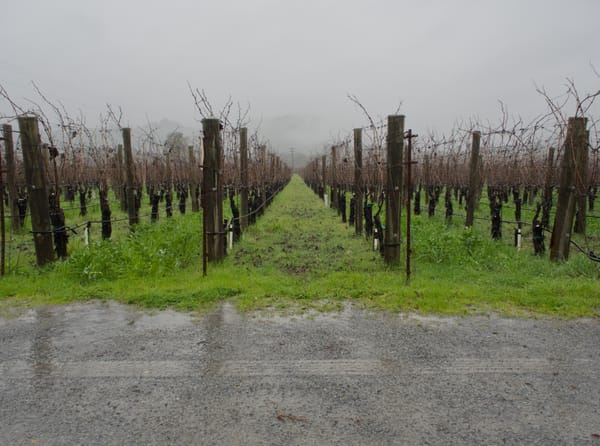
In the peak years of Bay Area tech offices, open offices were all the rage. As companies expanded, a physical division emerged between departments. Sales and support teams thrived in a buzzing atmosphere, alive with the sound of calls and collaboration. In contrast, engineering departments cultivated an environment akin to quiet libraries, where focused work prevailed, and meetings were confined to conference rooms. Often, these floors became physically separated - with one looking like a stock trading floor and the other more like a library.
This dichotomy of workspaces catered to the distinct needs of collaboration and concentration. Collaborative roles, such as sales or customer support, benefited from the energy of shared spaces and constant communication. Conversely, roles requiring deep focus, like coding or writing, flourished in the tranquility of isolated environments.
The sudden shift to online work blurred these boundaries. The nuances of physical offices vanished, replaced by a monolithic virtual office space in a chat application, like Slack or Teams. Chat has become the omnipresent digital office - showing who's online, what they're up to, and letting you talk to anybody.
By making chat omnipresent, we’ve begun over-communicating and over-collaborating, which has most affected the concentration-focused roles that thrived in the quiet of the physical office. The result is a digital workspace that's noisy and distracting, making it difficult to focus. We've lost the library's quiet and replaced it with the constant, dull roar everywhere. It's time to rethink how companies communicate online - because digtal knowledge work needs digital quiet.
Integrating concentration-focused workers into an always-on chat culture, symbolized by the omnipresent status indicator 🟢, poses a significant problem. The indicator, showing green when a person is online, subtly pressures employees to be perpetually available. This pressure isn't hypothetical - I once emerged from a deep coding session to find a message from the CEO saying, "It would be nice if the rest of the team saw you online more." We've conflated availability with productivity. But, the best knowledge work happens when a person is offline ⚪️, unavailable, and focusing. Sitting with the green light on all day should not be rewarded more than delivering business impact.
This insistence on constant availability disrupts the essence of focused work. Rather than encouraging employees to tackle complex problems independently, there's a trend, especially among junior staff, to quickly seek help upon encountering any obstacle. The fear is that being "blocked" under-utilizes an expensive team member. However, the nature of knowledge work is solving ambiguous, complicated problems - so the expectation of constant availability can lead to a culture of learned helplessness, which shunts professional development.
Modern companies have started to recognize the need to reduce unnecessary meetings, as seen in Shopify's initiative to delete unproductive meetings. However, many still overlook the importance of streamlining digital communications. Often, there's a misconception that more messages and channels equate to better communication, but this isn't the case. In reality, employees find themselves overwhelmed by an excessive number of messages across various channels. This constant influx of information demands their attention, pulling them away from focused, productive work.
In my experience at a previous company, I was part of over 100 Slack channels, each demanding a different level of engagement. Some channels were crucial for immediate tasks and decisions, while others were purely for informational purposes. The challenge was the expectation to stay constantly connected and responsive to all these channels. This led to a relentless stream of distractions, much like an endless, infinite-scrolling social media feed, where messages kept pouring in faster than they could be processed.
The issue with this setup is that chat platforms often become less about work and more about casual, non-essential conversations. They turn into virtual water coolers, where discussions are dominated by personal opinions and spontaneous thoughts. This environment rarely fosters meaningful decisions or insights. Thus, it's crucial for companies to realize that effective work rarely happens in these cluttered chat spaces, and to adjust their communication strategies accordingly.
By its nature, knowledge work demands deep concentration and an unbroken chain of thought. It involves holding and manipulating complex systems in one's mind, be it a sophisticated software architecture or the intricate details of an essay. Interruptions are not merely minor distractions but significant obstacles that break this chain of thought and require considerable time to re-establish. Flow state research details the psychology of concentrated work and finds it takes about 23 minutes to regain focus after an interruption. However, data shows that we're opening chat an average of every six minutes. Interruptions crowd out important, focused work - resulting in decreased productivity. People work late at night or on weekends because it’s the only time they can find quiet to concentrate.
Our current digital workspace has yet to acknowledge or address the substantial costs of context switching. I believe it's a significant contributor to fatigue and burnout in knowledge work. Chat channels can feel like sitting in multiple conference rooms simultaneously, listening into different conversations while trying to follow each one individually. The result is a constant state of mental exhaustion.
To reshape our digital communication landscape, we need to:
- Elevate the threshold for initiating conversations, discouraging trivial interruptions.
- Promote well-considered, clear communication to reduce the need for follow-up clarifications.
- Understand that not all messages necessitate immediate responses or reactions.
- Use synchronous meetings when back-and-forth communication is required.
- Offer flexibility in monitoring communication channels, with options for summarized updates.
- Ensure vital information is highlighted and not lost in a sea of trivial exchanges.
- For genuinely urgent communications, continue to rely on pagers and phone calls.
It's time to rethink communication best practices for knowledge workers. Communication is core to the job - people have things to share, questions to ask, and updates to give. Most communication should be long-form and asynchronous so people can follow up on their schedule. The expectation should be that knowledge workers batch their communication times, for instance, by scheduling an hour per day on their calendar for admin and collaboration - like they would a meeting. During this planned communication time, they can review and follow up on a queue of communications. Then, they should turn off communications until their next scheduled communication block. Topics that require back-and-forth discussion should result in a meeting. This approach balances collaboration with concentration.
A desire for digital quiet is why I’m booking Booklet. Businesses need an asynchronous way to communicate, and Booklet fulfills that by mixing the best of email and chat products. Booklet's early adopters have been "second communities" like investor networks, clubs, and communities. But, my goal and vision is for Booklet to gain traction in workplaces as knowledge workers push back against low-quality communication. Amazon fought against low-quality communication by banning PowerPoints and mandating memos. It won't be long before a similar forward-thinking enterprise bans chat in favor of long-form, async communication. The chat problem is the worst at the top - modern CEOs are in so many channels that chat is nearly useless for them, and they desire a better way to know what’s happening across their companies.
I championed remote work before the pandemic, and many companies couldn’t believe they would ever be remote. Five years later, the norms have inverted - in-person work is the exception rather than the rule for most tech companies. I firmly believe the next major shift in online work will be toward asynchronous-first communication. Many companies will resist such a shift in working styles, but if Bezos can ban the PowerPoint, then another forward-minded CEO can bury chat. All they need is a better tool to replace it, and I'm hoping Booklet can be that tool. A shift to asynchronous communication will enable globally distributed teams, enhance knowledge worker productivity, reduce burnout, and remove the assumption that everybody must work the same hours.
We may no longer have the quiet engineering floors of the past, but we can and should strive to split our digital lives into practices that support concentration versus collaboration. Remote work offers an opportunity to move closer to a quiet, concentrated way of working and promises to improve the productivity of companies that achieve it. In doing so, we reclaim the essence of productive workspaces, adapting them to the realities of our digital era. Restoring this balance is not just about enhancing productivity; it's about respecting the nature of different types of work and the environments they thrive in.


